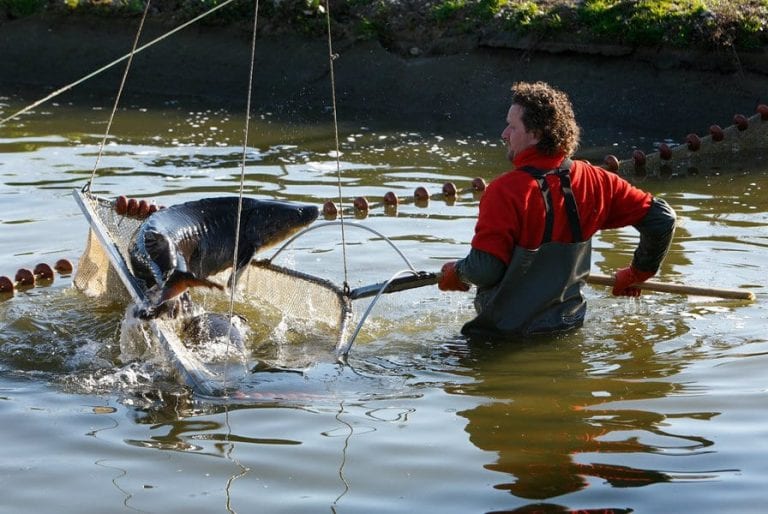Sturgeon: not just caviar
On the festive table, sturgeon occasionally makes an appearance, coupled with its eggs that have made it famous (i.e. caviar). But, it’s true that, in Italy, consumption of this primordial fish is limited to the table of a few fine restaurants, and little else. Even though the flesh is tasty and nutrient-rich. Here are some curiosities in snippets to learn to appreciate it.
Curiosities about sturgeon
- Sturgeon is a long-lived fish, which often lives more than one hundred years. It lives in the sea, but swims
upstream in freshwater courses, to reproduce.
- Historically, sturgeon was widely consumed in Italy in the river areas along the Po, but also in Lazio,
where it was fished in the Tiber (known as the “lupo del Tevere” or wolf of the Tiber) and was delicious
food for pontiffs and noble families. Three local breeds: Ladan (better known as beluga), the common
sturgeon (Acipenser sturio) and coby or Adriatic sturgeon (Acipenser naccarii).
- Polluted waters and illegal fishing have led to a drastic reduction of specimens, both in Italy and around
the world. Fishing sturgeon is therefore prohibited, in order to preserve an endangered species.
- Its flesh – only farmed and controlled – has high protein content and is rich in Omega 3. Those who want
to use it, however, must hash it, as if it were beef, otherwise too chewy. Sturgeon is also suitable in
smoked form or stored in oil, the good scraps can be used to make a tasty broth.


 Farewell cacio e pepe in New York. "With tariffs, Pecorino Romano will also become more expensive." The warning from Giuseppe Di Martino
Farewell cacio e pepe in New York. "With tariffs, Pecorino Romano will also become more expensive." The warning from Giuseppe Di Martino Against tariffs? Here are the US foods that could be "hit"
Against tariffs? Here are the US foods that could be "hit" US tariffs: here are the Italian wines most at risk, from Pinot Grigio to Chianti Classico
US tariffs: here are the Italian wines most at risk, from Pinot Grigio to Chianti Classico "With U.S. tariffs, buffalo mozzarella will cost almost double. We're ruined." The outburst of an Italian chef in Miami
"With U.S. tariffs, buffalo mozzarella will cost almost double. We're ruined." The outburst of an Italian chef in Miami "With US tariffs, extremely high risk for Italian wine: strike deals with buyers immediately to absorb extra costs." UIV’s proposal
"With US tariffs, extremely high risk for Italian wine: strike deals with buyers immediately to absorb extra costs." UIV’s proposal






